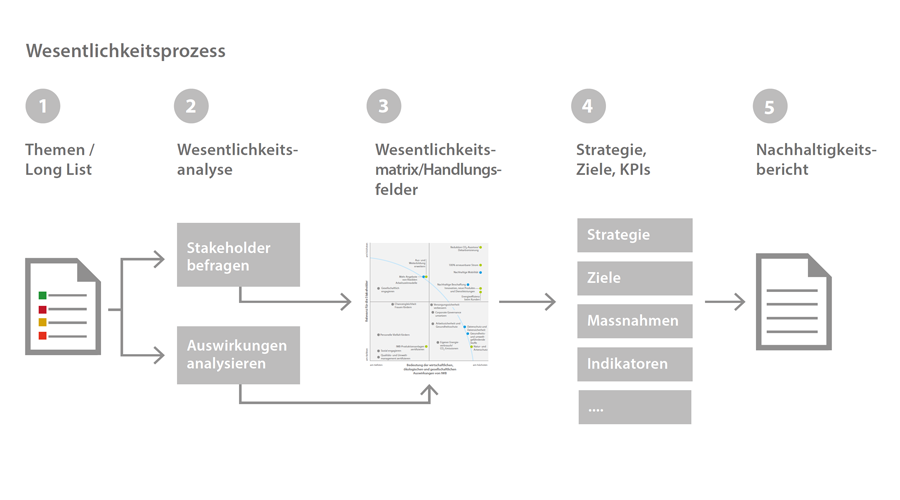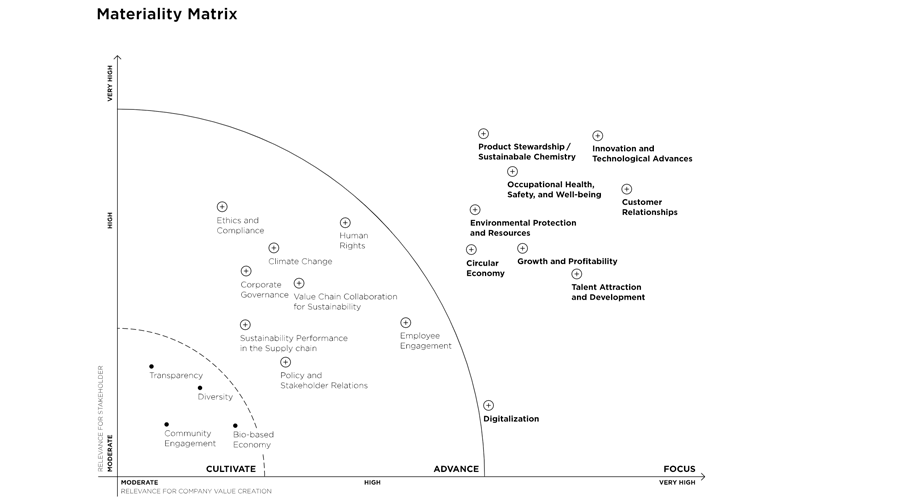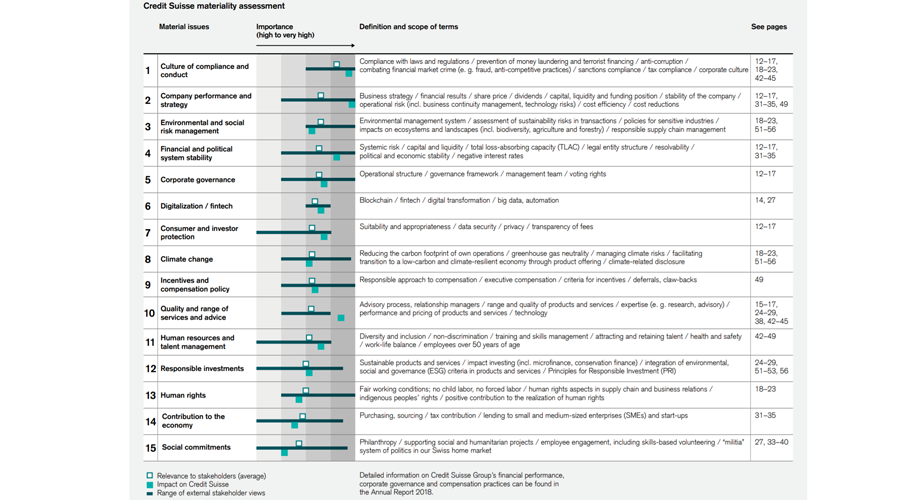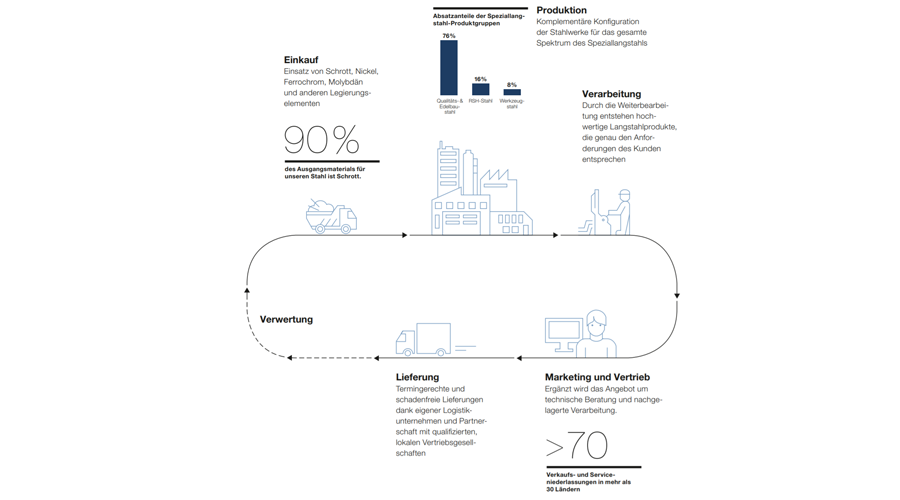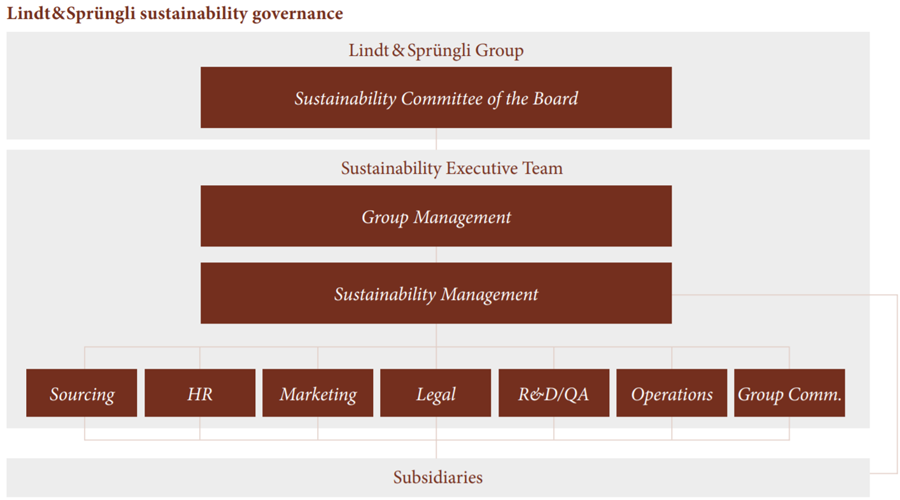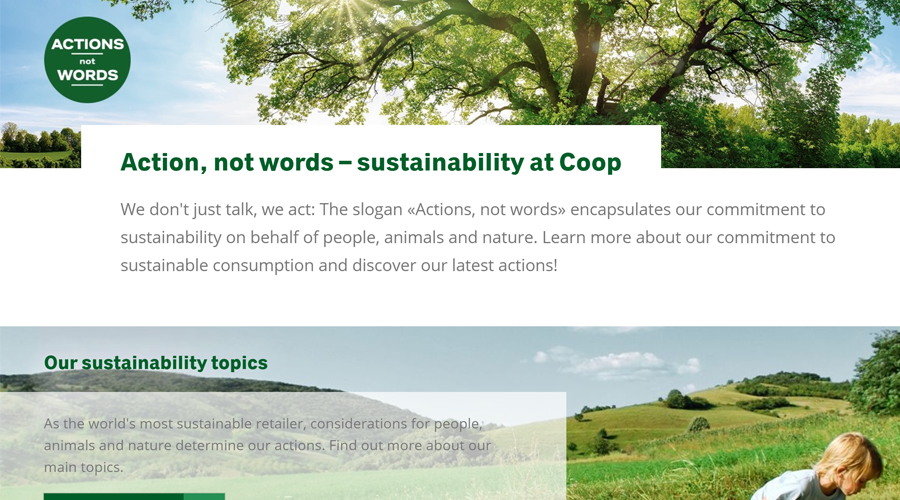Comprehensiveness
A comprehensive sustainability report follows a set of principles, includes material content and provides a compelling experience to the reader. The analysis is based on the ‘Reporting Matters’ methodology of World Business Counsel for Sustainable Development (WBCSD). Read more about the methodology.
Industry Ranking
As in 2017, all sectors score around 49% on average, with retail and wholesale trade scoring highest with 65% and real estate scoring lowest with 34%. The sectors scoring above 50% – hence those classifying as ‘advancing’ sectors – are retail and wholesale, food & beverage production, chemistry & pharmaceuticals, service providers as well as construction builders & suppliers.
%
Average industry score
- Retail and wholesale trade (2017: 50%) 65%
- Food & beverage production (2017: 48%) 62%
- Chemistry & pharmaceuticals (2017: 54%) 61%
- Other service providers (2017: 58%) 58%
- Construction builders & suppliers (2017: 54%) 54%
- Mobility, transport & logistics (2017: 53%) 52%
- Gastronomy & hotels (2017: 64%) 49%
- Insurance services (2017: 51%) 48%
- IT, medical & electrical engineering (2017: 40%) 47%
- Energy supply & distribution (2017: 43%) 46%
- Financial services (2017: 46%) 46%
- Manufacturing industry (2017: 36%) 40%
- Machine industry (2017: 44%) 38%
- Real estate (2017: 39%) 34%
Principles
General concepts that guide the sustainability reporting: completeness, materiality, stake-holder engagement, external environment, balance, conciseness.
Content
Information that should be contained in the reporting material: sustainability governance, strategy, management approach, perfor-mance, strategic partnerships, targets and commitments as well as evidence of activities.
Experience
Elements that improve the readers’ overall experience of the report: accessibility, story & messaging as well as navigation & flow.
Principles
Principles are overarching concepts that guide the application of the content criteria in the report.
While the reports largely meet the conciseness and external environment principles, there is still room to improve the materiality and balance principles.
- Conciseness (2017: 56%) 54%
- External environment (2017: 52%) 53%
- Stakeholder engagement (2017: 48%) 49%
- Completeness (2017: 43%) 49%
- Balance (2017: 37%) 40%
- Materiality (2017: 34%) 38%
- Strategy (2017: 58%) 57%
- Performance (2017: 48%) 51%
- Evidence of activities (2017: 55%) 49%
- Strategic partnerships (2017: 49%) 48%
- Management approach (2017: 56%) 47%
- Targets and commitments (2017: 37%) 39%
- Sustainability governance (2017: 34%) 38%
Content
The content in the report should be guided by certain elements.
While the reports largely disclose a sustainability strategy and performance, there is still room to improve the disclosure of targets and commitments as well as sustainability governance.
Experience
- Navigation and flow (2017: 63%) 68%
- Accessibility (2017: 65%) 66%
- Story and messaging (2017: 28%) 43%
The readers’ overall experience of the report depends on elements like accessibility, navigation & flow as well as story telling & messaging. Most Swiss Sustainability reports are quickly accessable and have a clear navitation, but there is still room for improvement in telling a compelling story and message.

